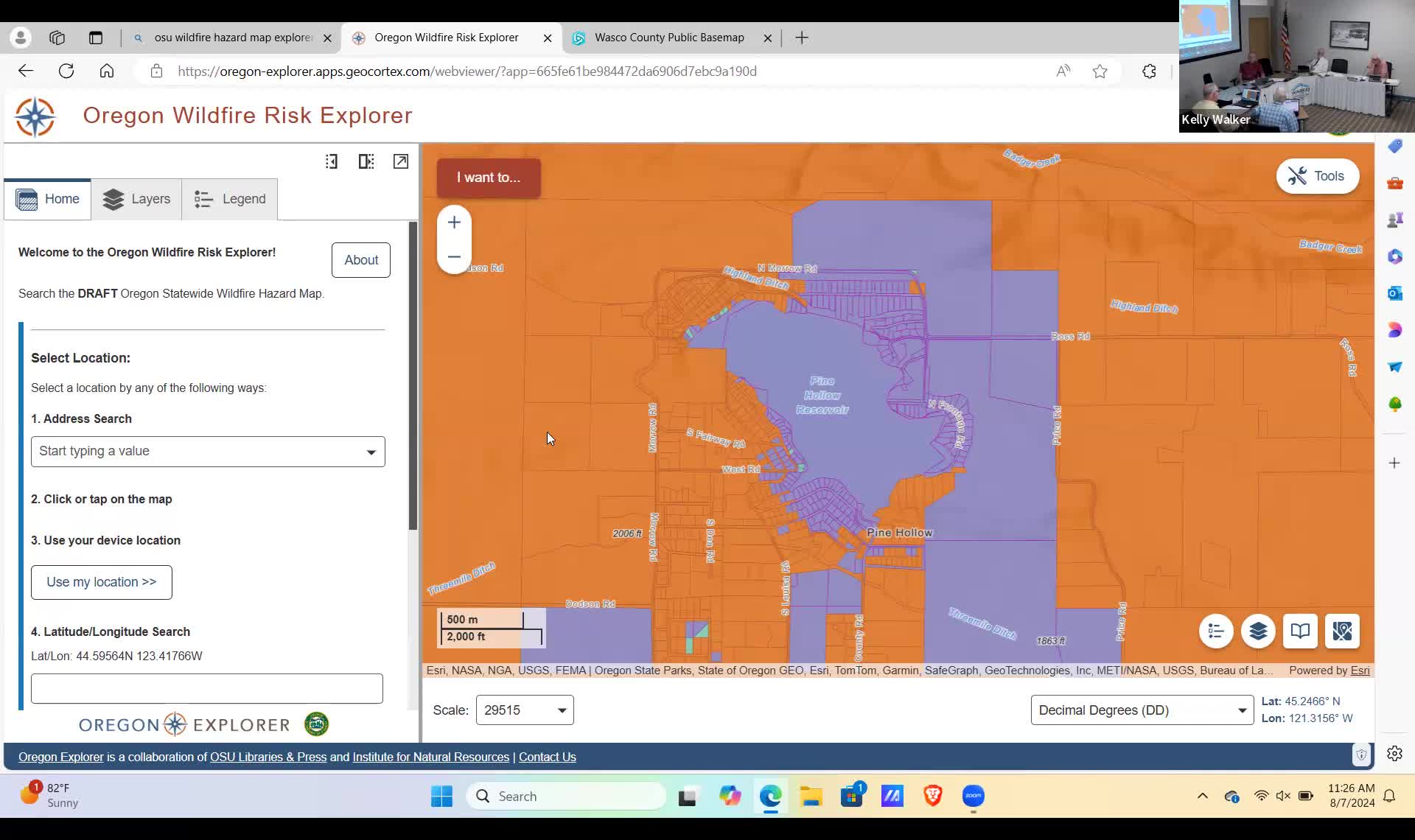Community Demands Fair Treatment for Irrigated Lands Amid Fire Risks
August 07, 2024 | Wasco County, Oregon
This article was created by AI summarizing key points discussed. AI makes mistakes, so for full details and context, please refer to the video of the full meeting. Please report any errors so we can fix them. Report an error »

In a recent government meeting, concerns were raised regarding the classification of irrigated agricultural lands in Wasco County, particularly in relation to wildfire hazard designations. Local farmers and representatives from the Badger Improvement District expressed frustration over what they described as inconsistent and inaccurate hazard ratings assigned to their lands, which they argue do not reflect the actual irrigation practices and fire prevention measures in place.
Dan, a representative from the irrigation community, highlighted discrepancies in the hazard classifications, noting that some adjacent properties with similar irrigation systems received vastly different ratings—ranging from low to high hazard. He emphasized that the current mapping process, which relies on estimated data rather than actual water delivery records, fails to accurately represent the fire risk associated with irrigated lands. This inconsistency, he argued, undermines the effectiveness of fire prevention strategies and could lead to negative consequences for local farmers, including potential impacts on insurance rates.
Steve Griffiths, another speaker with extensive experience in forestry modeling, supported Dan's claims, pointing out that the methodology used to create the hazard maps is flawed. He criticized the reliance on simulation techniques and suggested that real data from local irrigation practices should be prioritized to ensure accurate hazard assessments.
The urgency of the matter was underscored by the upcoming vote by the Oregon Department of Forestry to finalize the administrative rules regarding irrigated agriculture. Local representatives urged the Wasco County Commission to formally comment on the proposed rules before the September deadline, advocating for a more uniform treatment of agricultural lands in hazard assessments.
The meeting also touched on broader themes of community safety and wildfire resilience, with participants stressing the importance of local knowledge in shaping effective fire management policies. They called for greater collaboration between local stakeholders and state agencies to ensure that the unique characteristics of Wasco County's agricultural landscape are adequately considered in wildfire risk assessments.
As the discussion continues, local farmers remain hopeful that their concerns will be addressed, emphasizing the need for a fair and accurate representation of irrigated lands to enhance both agricultural viability and community safety in the face of increasing wildfire threats.
Dan, a representative from the irrigation community, highlighted discrepancies in the hazard classifications, noting that some adjacent properties with similar irrigation systems received vastly different ratings—ranging from low to high hazard. He emphasized that the current mapping process, which relies on estimated data rather than actual water delivery records, fails to accurately represent the fire risk associated with irrigated lands. This inconsistency, he argued, undermines the effectiveness of fire prevention strategies and could lead to negative consequences for local farmers, including potential impacts on insurance rates.
Steve Griffiths, another speaker with extensive experience in forestry modeling, supported Dan's claims, pointing out that the methodology used to create the hazard maps is flawed. He criticized the reliance on simulation techniques and suggested that real data from local irrigation practices should be prioritized to ensure accurate hazard assessments.
The urgency of the matter was underscored by the upcoming vote by the Oregon Department of Forestry to finalize the administrative rules regarding irrigated agriculture. Local representatives urged the Wasco County Commission to formally comment on the proposed rules before the September deadline, advocating for a more uniform treatment of agricultural lands in hazard assessments.
The meeting also touched on broader themes of community safety and wildfire resilience, with participants stressing the importance of local knowledge in shaping effective fire management policies. They called for greater collaboration between local stakeholders and state agencies to ensure that the unique characteristics of Wasco County's agricultural landscape are adequately considered in wildfire risk assessments.
As the discussion continues, local farmers remain hopeful that their concerns will be addressed, emphasizing the need for a fair and accurate representation of irrigated lands to enhance both agricultural viability and community safety in the face of increasing wildfire threats.
View full meeting
This article is based on a recent meeting—watch the full video and explore the complete transcript for deeper insights into the discussion.
View full meeting
